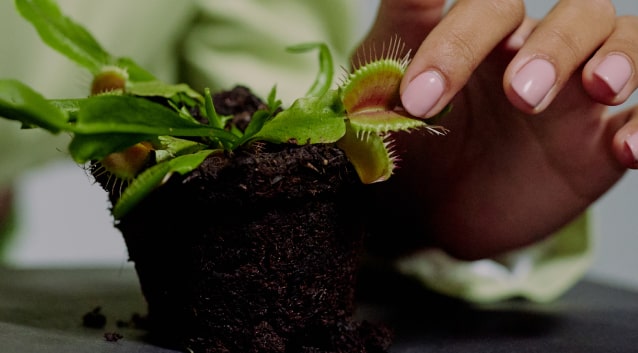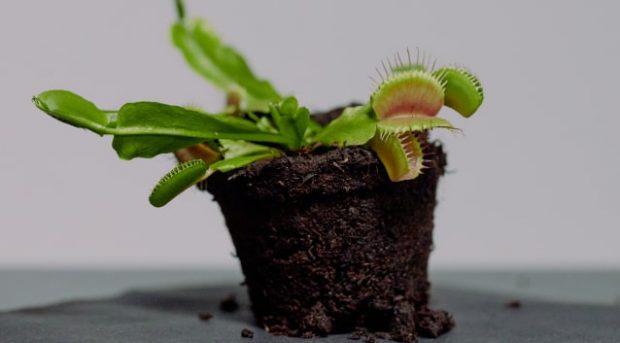Have you ever heard of carnivorous plants? These fascinating organisms have evolved unique mechanisms for capturing and digesting insects, making them stand out in the plant world. In this blog post, we’ll explore the different types of carnivorous plants, how they obtain nutrients, their benefits, and some common myths about them.
Types of Carnivorous Plants
Carnivorous plants come in many shapes and sizes, but they all share the ability to capture and digest insects. Some of the most well-known types of carnivorous plants include pitcher plants, Venus flytraps, and sundews.
Pitcher Plants
Pitcher plants are named for their shape: they have a tubular “pitcher” that insects fall into, unable to climb out due to the slippery surface inside. Once trapped, the insects drown in a pool of digestive enzymes at the bottom of the pitcher. There are several species of pitcher plants, each with its own unique adaptations. For example, the Nepenthes rajah can grow pitchers up to 1.5 liters in volume, making it one of the largest carnivorous plants in the world.
Venus Flytraps
Venus flytraps are perhaps the most well-known type of carnivorous plant. They have modified leaves that snap shut when triggered by an insect, trapping it inside. The plant then secretes digestive enzymes to break down the insect and absorb its nutrients. Venus flytraps are native to the southeastern United States and are a popular plant for collectors.
Sundews
Sundews are carnivorous plants with leaves covered in sticky, glandular hairs. When an insect lands on the leaf, it becomes stuck in the secretion and triggers the leaf to curl up, trapping the insect inside. The plant then secretes digestive enzymes to break down the insect and absorb its nutrients. There are over 200 species of sundews, found on every continent except Antarctica.

How Carnivorous Plants Obtain Nutrients
Carnivorous plants have evolved these unique mechanisms for capturing and digesting insects because they grow in nutrient-poor environments. By supplementing their diet with insects, they are able to survive in places where other plants might struggle.
Capturing Prey
The different types of carnivorous plants use different mechanisms to capture prey. Pitcher plants have slippery, downward-facing hairs that make it difficult for insects to climb out once they’ve fallen inside. Venus flytraps have modified leaves that snap shut when triggered by an insect. Sundews have sticky hairs that trap insects, and some species also have tentacle-like structures that wrap around the insect to ensure it doesn’t escape.
Digestion
Once the plant has captured an insect, it secretes digestive enzymes to break down the insect and absorb its nutrients. These enzymes are similar to the ones found in our own stomachs but are much more potent. Some carnivorous plants, like the Venus flytrap, can even detect the amount of nutrients in the insect and adjust their enzyme secretion accordingly.
The Benefits of Carnivorous Plants
Carnivorous plants play an important role in their ecosystems, as well as in scientific research.
Ecological Benefits
Carnivorous plants are an important part of the food web, providing a food source for animals that eat insects. They also help control insect populations, which can be beneficial for crops and other plants. In addition, carnivorous plants have been found to have a positive effect on nutrient cycling in their ecosystems.
Scientific Benefits
Carnivorous plants are also of great interest to scientists and researchers. For example, the digestive enzymes produced by carnivorous plants have potential applications in medicine and biotechnology. Some studies have even suggested that carnivorous plants may be able to help with pest control.
Carnivorous plants also have potential applications in horticulture. For example, some gardeners use Venus flytraps and sundews as natural pest control in their greenhouses. Instead of using harmful chemicals, they introduce carnivorous plants to their gardens to help control pests like aphids and fungus gnats.

Myths About Carnivorous Plants
Despite their fascinating adaptations and benefits, carnivorous plants are often misunderstood. Here are some common myths about carnivorous plants:
Myth #1: Carnivorous plants are dangerous to humans.
While carnivorous plants are capable of digesting insects, they are not dangerous to humans. Their digestive enzymes are not strong enough to harm us, and their traps are designed to capture small insects, not large animals.
Myth #2: Carnivorous plants can survive on insects alone.
While carnivorous plants obtain nutrients from insects, they still need sunlight and water to survive. Insects provide supplemental nutrition in environments where other nutrients are scarce, but they cannot replace the plant’s need for light and water.
Myth #3: Carnivorous plants are difficult to care for.
While carnivorous plants have unique care requirements, they are not necessarily difficult to care for. Most carnivorous plants require bright, indirect sunlight, high humidity, and distilled or rainwater. With proper care, carnivorous plants can thrive in both indoor and outdoor environments.
Conclusion
Carnivorous plants are a fascinating group of organisms that have evolved unique mechanisms for capturing and digesting insects. From pitcher plants to Venus flytraps to sundews, these plants come in many shapes and sizes and play an important role in their ecosystems.
By supplementing their diet with insects, they are able to survive in nutrient-poor environments and provide benefits to both animals and humans. So the next time you come across a carnivorous plant, take a moment to appreciate its wonders and unique adaptations.
